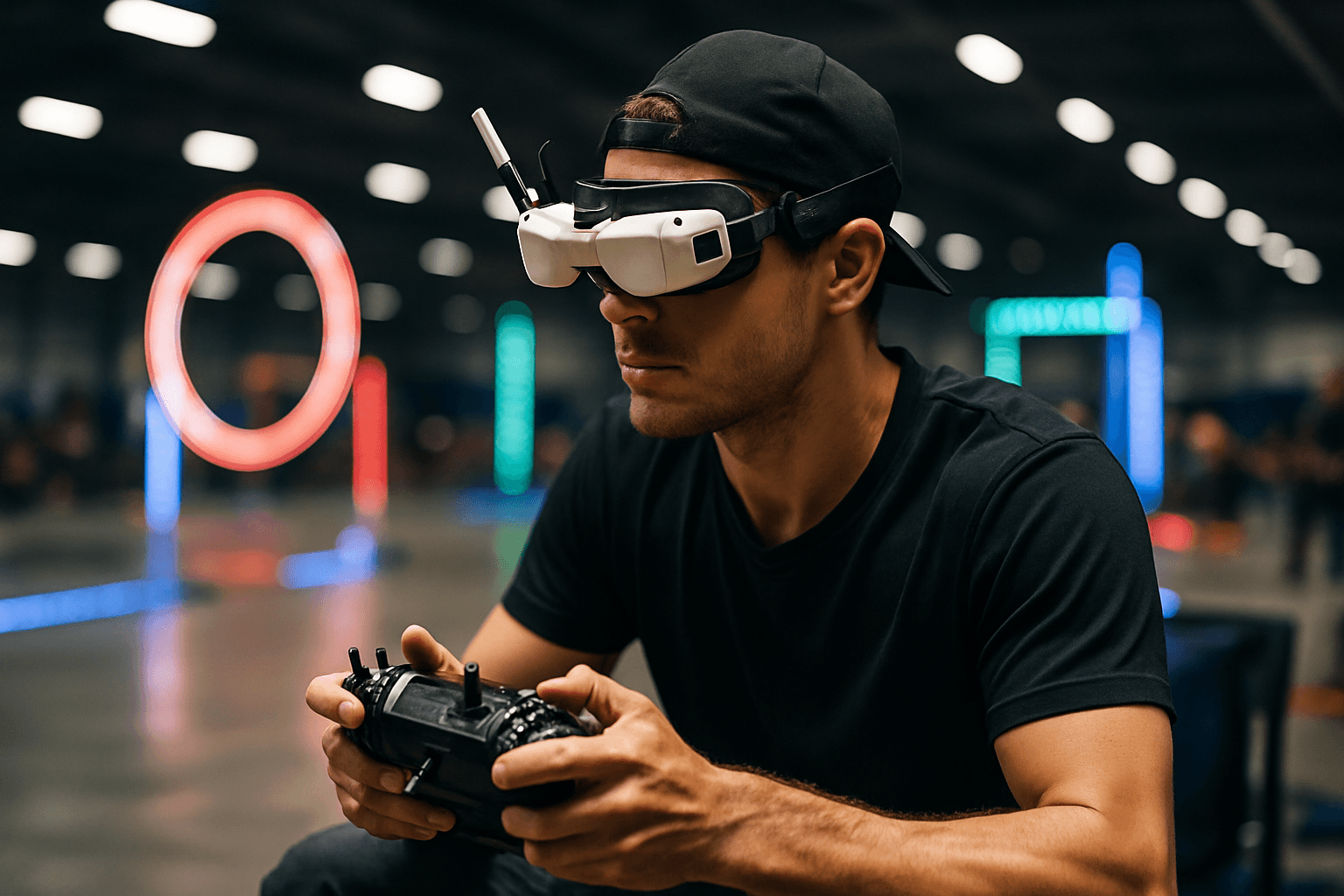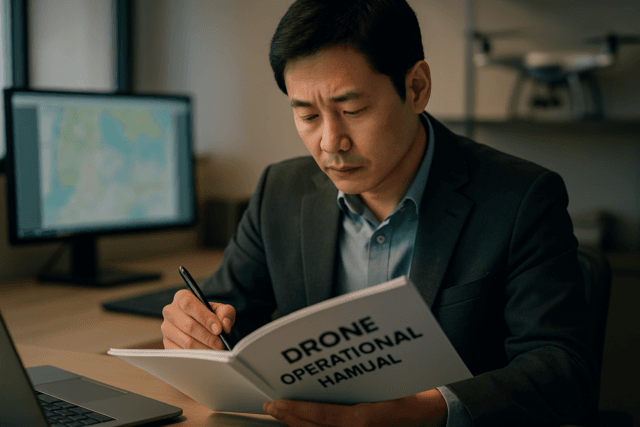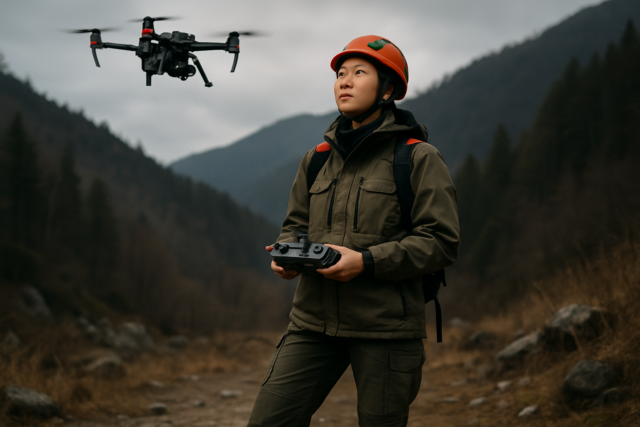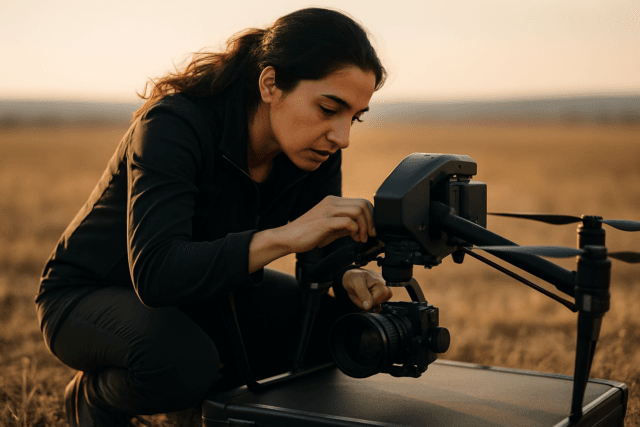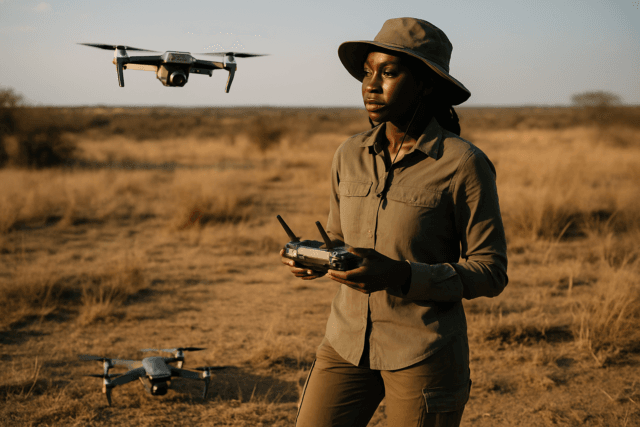Drone racing has rapidly ascended from a niche hobby to a globally recognized, high-speed spectacle, captivating audiences with its unique blend of technology, precision piloting, and adrenaline-pumping competition. This dynamic sport features pilots navigating agile, custom-built drones through intricate 3D courses at remarkable speeds, often while wearing First-Person View (FPV) goggles that provide an immersive, cockpit-like experience.
The Genesis of an Aerial Spectacle
The origins of drone racing can be traced back to the early 2000s, emerging from the enthusiasm of amateur drone controllers and FPV enthusiasts. Early iterations saw hobbyists experimenting with small quadcopters equipped with cameras, laying the groundwork for organized competitions. The first organized drone competition, known as Rotorcross, was held in Australia in 2014, marking a significant milestone in the sport’s development. From these grassroots beginnings, drone racing quickly gained prominence and expanded internationally.
The Role of First-Person View (FPV) Technology
Central to the thrilling nature of drone racing is First-Person View (FPV) technology. Pilots wear head-mounted displays or goggles that receive a live video feed directly from a camera mounted on the drone. This immersive perspective allows pilots to control their drones as if they were seated inside the cockpit, enabling them to navigate complex courses with remarkable precision and react to obstacles in real-time. The low-latency video transmission is crucial for maintaining precise control, particularly at the high speeds achieved during races.
Major Drone Racing Leagues and Organizations
As the sport matured, various leagues and governing bodies emerged, standardizing rules, fostering competition, and broadening drone racing’s appeal.
The Drone Racing League (DRL): Professionalizing the Sport
The Drone Racing League (DRL) stands out as a premier global professional drone racing circuit. Established in 2015, DRL has been instrumental in professionalizing the sport, showcasing elite pilots racing custom-built drones through futuristic 3D courses. DRL drones, such as the Racer4, are designed and built in-house, capable of reaching speeds up to 90 MPH (over 140 km/h). The league combines high-tech innovation with thrilling competition, often filming its races for broadcast and digital audiences across major networks and streaming platforms. DRL also offers a popular simulator, the DRL Sim, which allows aspiring pilots to practice and even compete in virtual tournaments, with winners potentially earning professional contracts.
MultiGP: The Global Community Network
MultiGP is recognized as the world’s largest drone racing league and FPV community, boasting hundreds of chapters across the United States and internationally. Founded by pilots for pilots, MultiGP focuses on organizing frequent competitive gatherings and casual events, providing a structured yet accessible format for drone racing enthusiasts. MultiGP chapters organize local events and qualifying races, which feed into larger regional and national championships. The league also develops proprietary tools like ZippyQ and RaceSync to facilitate race management and ensure fair competition.
Drone Champions League (DCL) and Other Emerging Leagues
The Drone Champions League (DCL) is another significant professional mixed-reality drone racing league. DCL unites top pilots and utilizes “Digital Twin” technology to merge virtual and real worlds, offering an immersive racing experience. Like DRL, DCL also provides a simulation game, “DCL – The Game,” making the thrill of drone racing accessible to a wider audience. Other organizations, such as Major League Drone Racing (MLDR), are also in development, aiming to expand the professional landscape of the sport.
International Governing Bodies: FAI’s Role
The Fédération Aéronautique Internationale (FAI) serves as the world governing body for air sports, including drone racing. Recognized by the International Olympic Committee, the FAI coordinates major international competitions like the FAI Drone Racing World Cup and the FAI World Drone Racing Championship, establishing rules and regulations that govern the sport globally.
Signature Events and Championships
Several high-profile events punctuate the drone racing calendar, showcasing the pinnacle of aerial athleticism and technological prowess.
FAI World Drone Racing Championship
The FAI World Drone Racing Championship is the largest and most prestigious competition of its kind, bringing together elite drone racing pilots from around the globe to compete for the world title. Recent editions have taken place in various international locations, with the 2024 championship held in Hangzhou, China. These championships highlight the incredible skill and precision required to excel in the sport.
The World Drone Prix: A Landmark Event
The World Drone Prix, held in Dubai in March 2016, was a landmark event that significantly raised the global profile of drone racing. With a substantial prize purse, including a $1 million grand prize pool, it attracted over 150 teams from 26 countries. The event featured a custom-built, physical track and garnered significant media attention, showcasing drone racing on an unprecedented scale. British teenager Luke Bannister famously won the inaugural racing event, taking home a quarter-million-dollar prize.
The World Games
Drone racing has also earned its place in multi-sport events like The World Games. It was featured in the 2022 edition and is scheduled again for the 12th edition of The World Games in Chengdu, China, from August 7-17, 2025. Its inclusion in such a prestigious international event underscores its growing recognition as a legitimate and thrilling sport.
The Technology Powering the Races
The rapid evolution of drone racing is intrinsically linked to advancements in drone technology, particularly in FPV systems and drone design.
High-Performance Racing Drones
Racing drones are specifically engineered for speed and agility. They are typically custom-built by pilots from individual components, featuring lightweight materials, robust frames, and efficient motors. These drones can reach incredible speeds, often exceeding 100 mph (160 km/h) and some even up to 230 km/h. Advancements in battery technology have also contributed to longer flight times, allowing for more extended and challenging races.
Precision Control and Immersive Experience
The FPV system provides pilots with a critical real-time video feed, enabling the precise control necessary to navigate complex courses. High-definition cameras, low-latency video transmission systems, and advanced flight controllers are vital components that contribute to the immersive and responsive flying experience. The combination of rapid acceleration and agile maneuverability demands lightning-fast reflexes and exceptional hand-eye coordination from pilots.
The Evolution and Future Trajectory of Drone Racing
Drone racing has transitioned from a niche enthusiast activity to a professional sport with a global footprint, attracting growing audiences, sponsorships, and media coverage.
Growth, Accessibility, and Skill Development
The sport continues to expand globally, with dedicated competitions and leagues emerging across various continents. The availability of simulators, such as those offered by DRL and MultiGP, has significantly lowered the barrier to entry, allowing aspiring pilots to learn and practice their skills without the immediate investment in physical hardware. This accessibility, combined with the inherent thrill of high-speed aerial competition, has fostered a vibrant and growing community of pilots and fans.
The Integration of AI and Autonomous Racing
The future of drone racing is poised for further innovation, with the integration of artificial intelligence (AI) and the rise of autonomous drone racing. Leagues like DRL have already launched initiatives such as the Artificial Intelligence Robotic Racing (AIRR) Circuit, inviting teams to design AI frameworks capable of flying drones autonomously through race courses. The A2RL x DCL Autonomous Drone Championship further exemplifies this trend, pushing the boundaries of AI in competitive racing. This development signifies a fascinating convergence of human skill and advanced machine intelligence within the sport.
Drone Racing’s Place in Mainstream Sports
As technology continues to advance and interest grows, drone racing is increasingly positioned as a legitimate and exhilarating modern sport. Discussions about its potential inclusion in major sporting events like the Olympic Games reflect its burgeoning mainstream appeal. The unique blend of technological innovation, piloting skill, and thrilling visuals ensures that drone racing will continue to captivate audiences and push the boundaries of what is possible in aerial entertainment.

